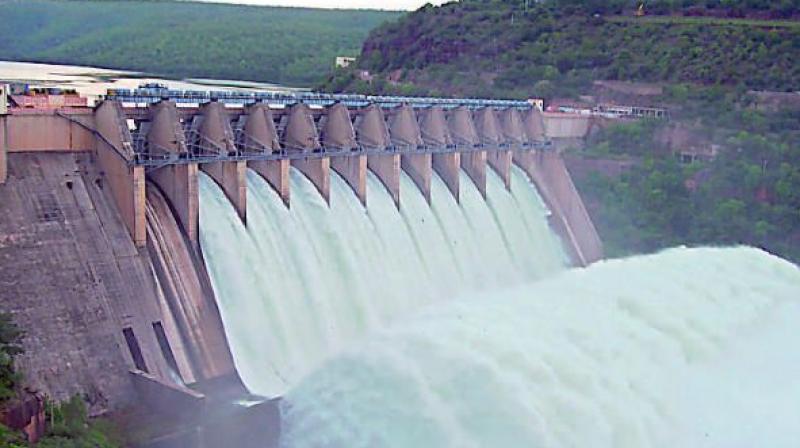Srisailam dam faces underwater test

KURNOOL: The Srisailam dam withstood two severe floods in 1999 and 2009, but not without succumbing to challenges to its very structural stability.
Water discharged from the dam crest gates jumps into the bucket area, rises to a height of 200 ft and lands at a distance of 300 meters. Under the pressure from water, a big ditch of 300 ft has been formed, said a retired engineer who was associated with the project during its construction.
Srisailam SE M. Sambasiva Reddy said that a team from the National Institute of Oceano-graphy at Goa had begun deep water video-filming of the extent of damage of the plunge pool. He said that this would enable the authorities to take swift measures to arrest the spread of cavities to the foundation. The safety of dam has become a cause of concern.
as questions over withstanding a new flood of the magnitude of the 2009 flood is answered in the negative. What is at stake is the fact that dam authorities are not carrying on pre and post monsoon inspections regularly.
This came for criticism at the recently held national committee on dam safety (NCDS) in Bhubaneswar, said the engineer.
He said that members of the NCDS were urged to carry out pre- and post- monsoon inspection of each large dam under their jurisdiction as per the standard checklist, upload the report and submit the same to the Central Dam Safety Organisation and the Central Water Commission regularly.
About 75 per cent of large dams in India are more than 25 years old and about 164 are more than 100 years old. India has had 36 dam failures in the past.
The Central Water Commission, through the National Committee on Dam Safety, Central and state dam safety organisations has been working to safeguard dams but they do not have statutory powers and are only advisory in nature, the engineer said.
India has had 36 dam failures in the past.

